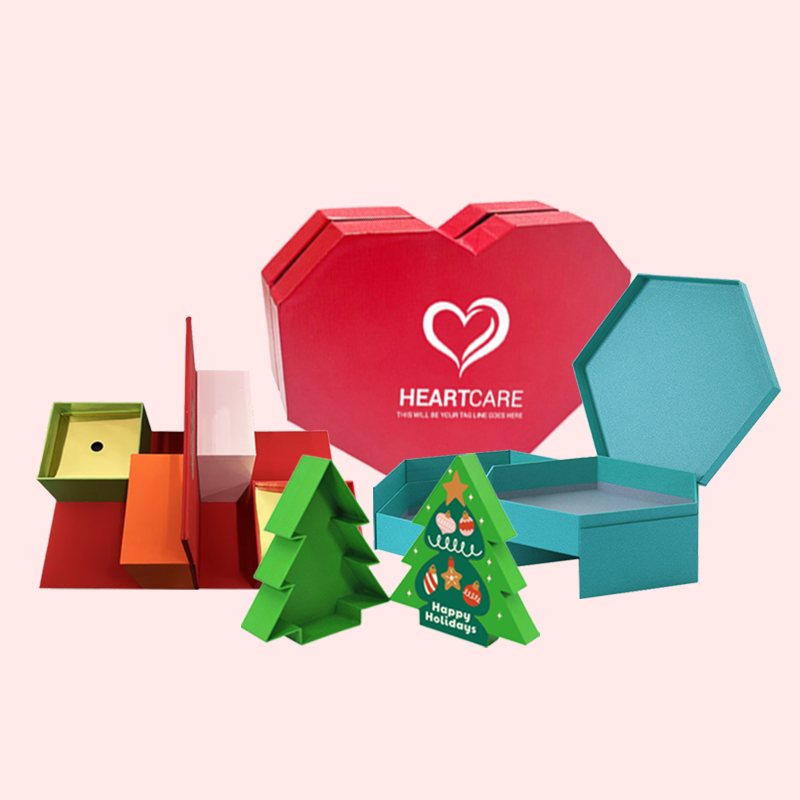Choosing the wrong bag material risks product damage and a poor brand image. It’s a common problem, but one that is easily solved with the right information.
Yes, caring about the bag's material is crucial. It affects product safety, shipping costs, your brand's image, and environmental impact. The right material ensures your product is protected and presented well, making it a key decision in your packaging strategy.
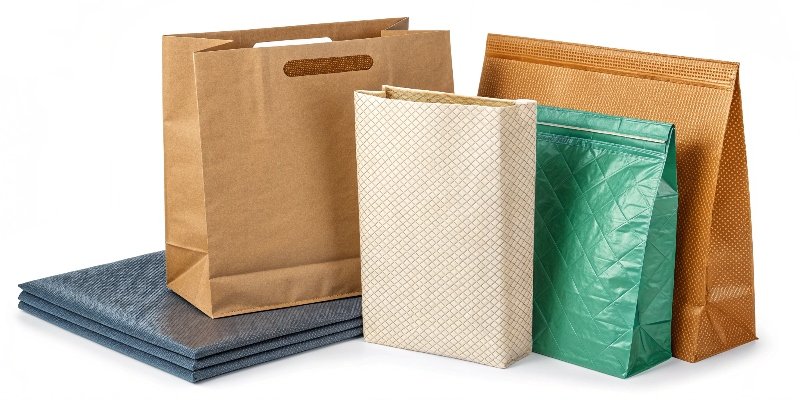
In my 16 years in the packaging industry, I've seen firsthand how a simple material choice can make or break a product launch. A designer like Peter knows this well. It’s not just about looks; it's about function, cost, and a dozen other factors. You have questions, and after all this time in the business, I have some answers that can help you navigate this decision. Let's dig into the specifics.
Which type of bag material is best?
Feeling overwhelmed by all the bag material options available? Picking the wrong one can be a costly mistake. The best material is simply the one that fits your product perfectly.
There's no single "best" material for every situation. The right choice depends on your product's weight, your budget, and the image you want to project. For lightweight items1, paper might be perfect, while heavier goods may need a durable plastic2 or fabric.
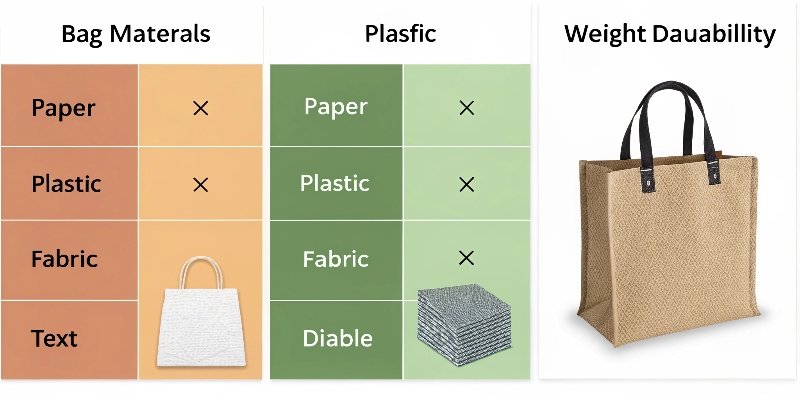
I always tell my clients that the "best" material is a moving target. It changes based on what you value most. A product designer needs to balance these factors constantly. Let's break down the common choices to help you decide.
Key Decision Factors
When my team and I consult with a new client, we always start with three questions:
- What is the product? Its weight, size, and fragility are the most important factors.
- What is your brand identity? Are you a luxury brand, an eco-conscious startup, or a budget-friendly option3?
- What is your budget? Cost per unit is a reality we all have to work with.
Material Comparison Table
Here is a simple table I use to explain the basic trade-offs between the main material categories.
| Material Category | Best For | Pros | Cons |
|---|---|---|---|
| Paper | Eco-conscious brands, lightweight items1, premium feel4. | Recyclable, good for printing, premium look. | Not waterproof5, can tear easily. |
| Plastic (Poly) | E-commerce shipping, protecting from moisture. | Waterproof, durable, lightweight, low cost. | Negative environmental perception. |
| Fabric | High-end retail, reusable promotional items6. | Highly reusable, strong, very premium feel4. | Highest cost, heavier than others. |
Thinking through this table is the first step. It helps you narrow down your options from dozens to just a few, making the final decision much easier.
What material are shipping bags made of?
Worried about your products getting damaged during shipping? A torn bag can mean lost goods and unhappy customers. Let’s look at the materials designed to prevent exactly that problem.
Shipping bags are commonly made from two main materials: polyethylene (poly) plastic7 and kraft paper. Poly mailers are chosen for their water resistance and durability. Kraft paper mailers are a popular eco-friendly alternative, often with padding for extra protection during transit.
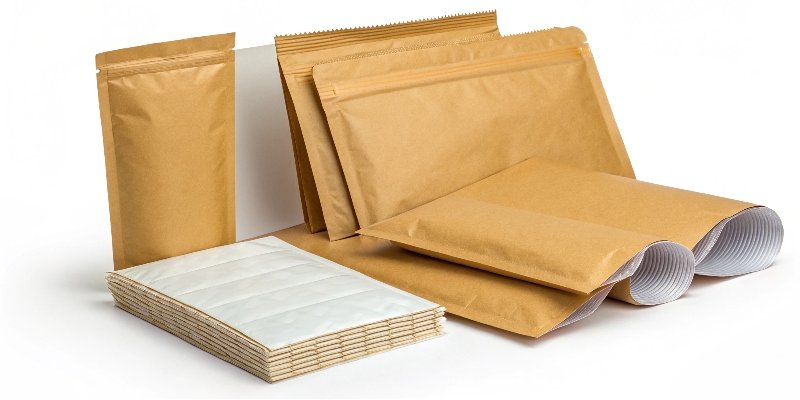
When it comes to shipping, function beats form almost every time. Your bag's primary job is to survive a rough journey. Over the years, I've seen two materials emerge as the clear winners for this task. They each have specific strengths that make them suitable for different kinds of products and brands. A good designer knows which one to pick for the right job.
Polyethylene (Poly) Mailers
These are the workhorses of the e-commerce world. They are made from a strong plastic film. Usually, it's a co-extruded film, which means it has multiple layers. This layering makes it incredibly puncture and tear-resistant. The outer layer is often white for easy labeling, while the inner layer is black or gray to keep the contents from being seen. They are also waterproof5, which is a huge advantage.
Kraft Paper Mailers
Paper mailers are the go-to for brands focused on sustainability8. They are made from strong kraft paper, which is a durable, wood-pulp-based material. For fragile items9, you’ll see padded paper mailers. These have a layer of cushioning inside, often made from macerated recycled paper. There are also rigid paper mailers, made from stiff paperboard. These are perfect for shipping documents or prints that cannot be bent.
Here is a quick comparison based on my experience:
| Feature | Poly Mailer | Kraft Paper Mailer |
|---|---|---|
| Durability | High (tear & puncture resistant) | Medium (can tear if snagged) |
| Water Resistance | Excellent | Poor (unless coated) |
| Weight | Very Light | Light |
| Sustainability | Improving (recycled options exist) | Excellent (recyclable & compostable) |
| Best Use | Apparel, soft goods, non-fragile items9 | Books, cosmetics, fragile items9 (padded) |
Should I condition my bags?
Ever had bags tear or degrade in storage? Environmental factors like humidity and temperature can ruin your packaging. Let’s talk about how to protect your investment.
While you don't "condition" them like leather, considering the environment is vital. Paper bags weaken in high humidity, and some plastics can become brittle in extreme cold. Proper material selection and climate-controlled storage10 are key to maintaining bag quality.
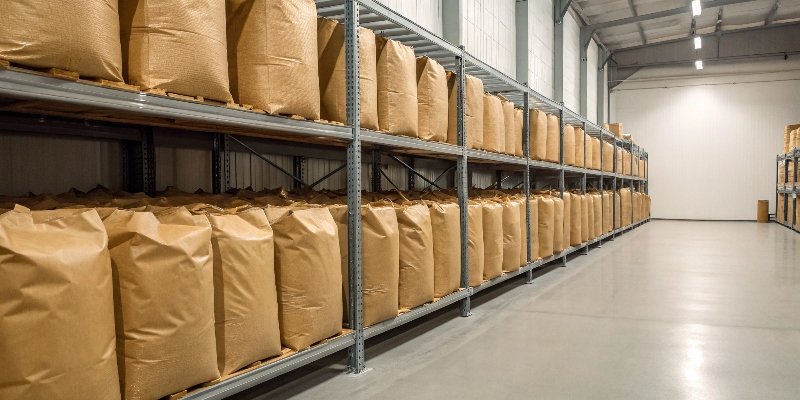
This question might sound a bit strange, but I understand the meaning behind it. It's not about applying a conditioner. It’s about understanding how environmental conditions affect your packaging materials before they are even used. I've had clients lose thousands of dollars in inventory because their warehouse was too damp or too cold. So, "conditioning" your bags really means storing them correctly.
Humidity and Paper
Paper is made of fibers that absorb moisture from the air. In a humid environment, a kraft paper bag can feel limp and weak. The glue used to seal the seams can also fail. I once saw an entire shipment of beautiful paper shopping bags become useless because they were stored in a damp basement. The paper lost all its crispness and strength.
Temperature and Plastics
Plastics are also sensitive to temperature. Poly mailers, which are usually made from Low-Density Polyethylene (LDPE), can become very stiff and brittle in freezing temperatures. If you try to stuff a product into a frozen poly mailer, it might crack. On the other hand, extreme heat can cause adhesives on the self-seal strips to become overly sticky or fail.
Best Storage Practices
To avoid these problems, follow these simple storage rules I give all my clients:
- Keep them dry: Store all bags in a space with controlled, low humidity.
- Stable temperature: Avoid extreme cold or heat. A typical room temperature is perfect.
- Off the floor: Store boxes of bags on pallets or shelves, not directly on a concrete floor which can transmit moisture.
- Away from sunlight: UV rays from the sun can degrade both paper and plastic over time, making them weak and faded.
What material is the shopping bag made of?
A shopping bag is a key part of the customer experience. A cheap bag that rips can ruin that moment. Let’s ensure your bag reflects your brand’s quality and values.
Shopping bags come in many materials. The most common are paper (from basic kraft to glossy art paper), plastic (like HDPE for sturdier bags), and reusable fabrics (cotton, canvas, non-woven polypropylene11). Each choice sends a different message about a brand.
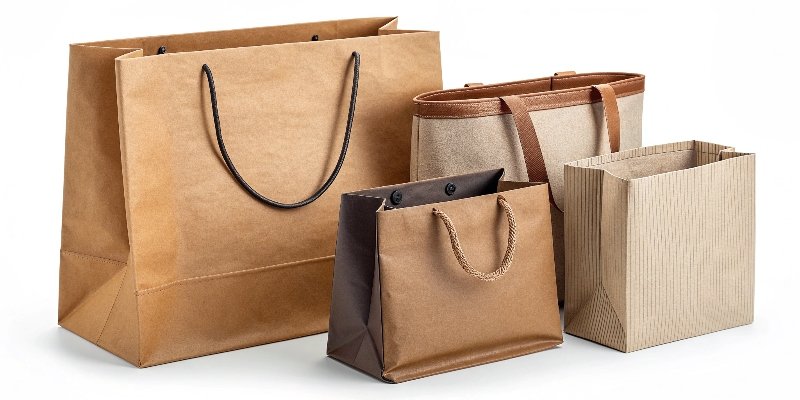
A retail shopping bag is more than just a way to carry products. It’s a statement. It’s a walking billboard for your brand. That's why choosing the right material is so important for retailers. In my meetings with product designers and brand managers, we spend a lot of time on this topic. The material, color, and handle type all work together to create a specific feeling for the customer.
Paper Shopping Bags
Paper is the classic choice for retail. There's a big difference between types, though. Brown kraft paper gives an earthy, rustic, and eco-friendly vibe. White or coated art paper feels more polished and luxurious. Art paper is also better for high-quality, full-color printing. The handles matter, too. Twisted paper handles are standard, while soft rope or ribbon handles signal a more premium product.
Plastic Shopping Bags
Plastic retail bags are all about durability and cost-effectiveness. High-Density Polyethylene (HDPE) is the thin, crinkly plastic used for grocery bags. It's strong for its weight but feels inexpensive. Low-Density Polyethylene (LDPE) is softer, less crinkly, and has a more premium feel4. Many fashion boutiques use thick LDPE bags with die-cut handles for a sleek look.
Reusable Fabric Bags
For the ultimate premium or eco-statement, fabric is the way to go. Non-woven polypropylene (NWPP) is a very common, cost-effective fabric option. It's durable and great for printing logos. For a more natural and high-end feel, many brands choose cotton or canvas. These bags are often kept and reused by customers for months or years, providing long-term brand exposure.
| Bag Type | Common Material | Perceived Value | Reusability |
|---|---|---|---|
| Standard Paper | Kraft Paper | Mid-Range / Eco | Low |
| Luxury Paper | Coated Art Paper | High | Low |
| Standard Plastic | HDPE | Low | Low |
| Premium Plastic | LDPE | Mid-Range | Low |
| Fabric Tote | Cotton, Canvas, NWPP | Very High | Excellent |
Conclusion
In the end, the right bag material protects your product, defines your brand, and controls your costs. Take the time to choose wisely for the best results.
-
Explore this link to discover innovative lightweight packaging solutions that can enhance your product's appeal. ↩ ↩
-
Learn about the advantages of durable plastic packaging and how it can protect your products effectively. ↩
-
Discover cost-effective packaging solutions that won't compromise on quality for your small business. ↩
-
Discover materials that can enhance the premium feel of your packaging and attract customers. ↩ ↩ ↩
-
Learn about various waterproof packaging materials that can protect your products during transit. ↩ ↩
-
Discover effective reusable promotional items that can enhance brand visibility and customer loyalty. ↩
-
Understand the properties of polyethylene plastic and its applications in the packaging industry. ↩
-
Explore strategies for businesses to enhance sustainability in their packaging choices. ↩
-
Discover the best packaging solutions for fragile items to ensure safe delivery. ↩ ↩ ↩
-
Learn about the importance of climate-controlled storage for maintaining packaging quality. ↩
-
Learn about non-woven polypropylene and how it can be utilized in eco-friendly packaging solutions. ↩


